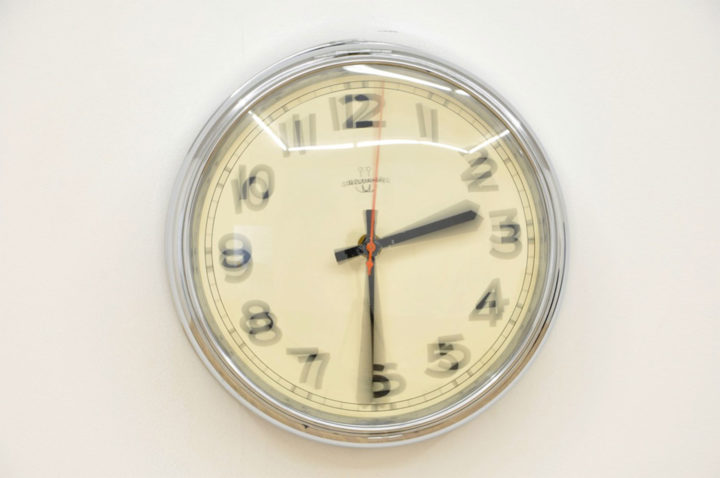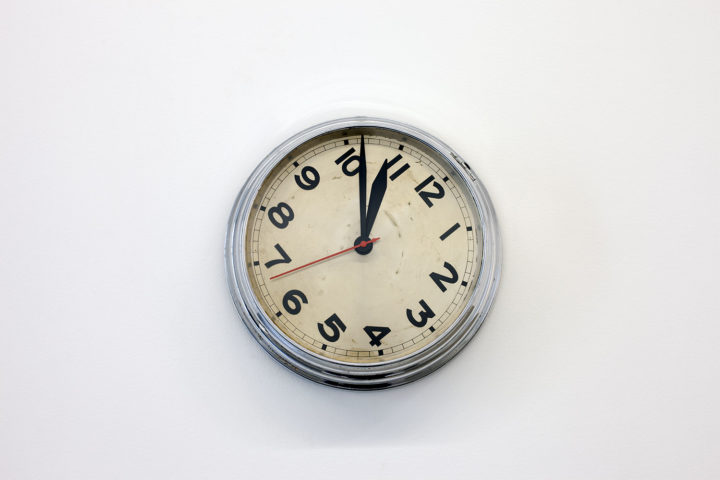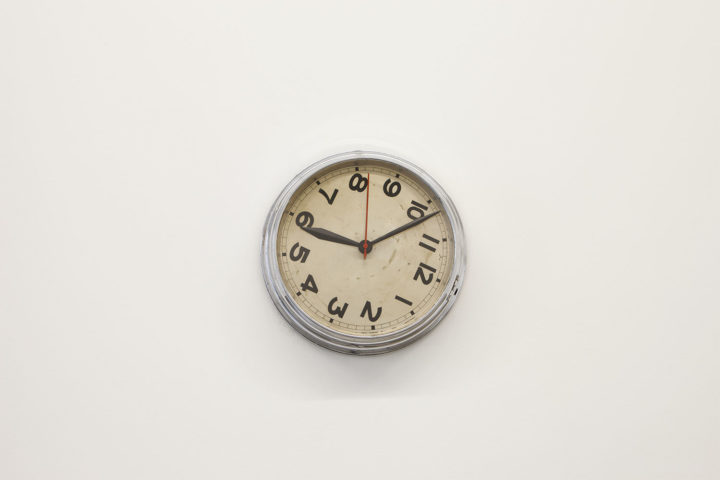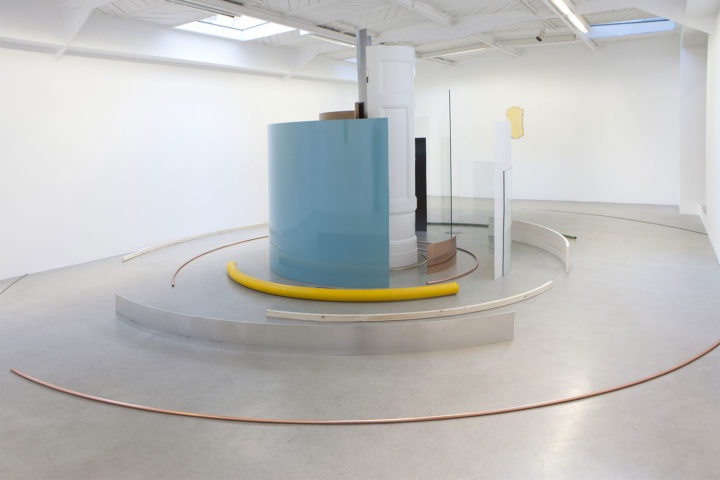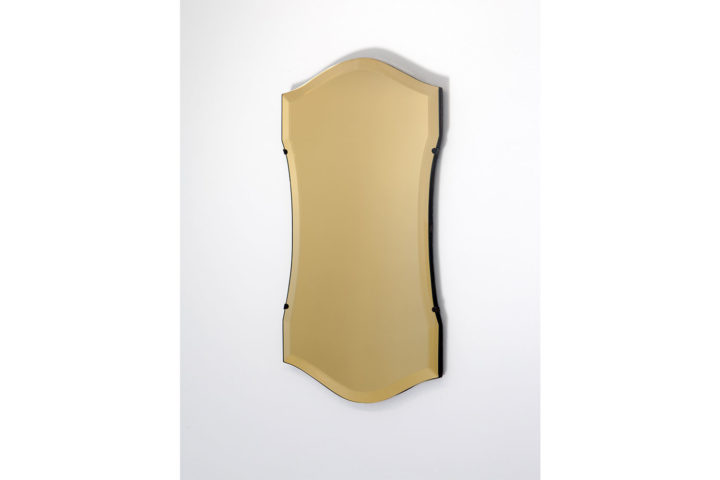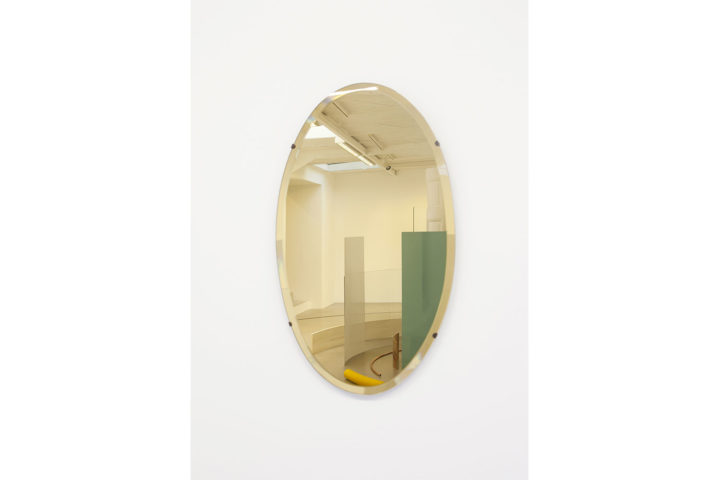Timothée Chaillou: Is the definition Gegenwartsdauer close to Deleuze’s “crystal-image” – a representation of the splitting of time, the movement of past and present reflected through images?
Alicja Kwade: Deleuze describes time as the synthesis between past and future. Present is something which conveys past-present as images and repeats them as a movement. The synthesis of time, and also its analysis is just possible in the present. I worked a lot with what Deleuze called “crystal-image”. Eadweard Muybridge’s photographs also influenced me. I tried to transport that idea in the present to make it physical, from image to object, and also readable in both directions from past to future seen from the present and from future to past.
TC: As Claude Chabrol said, “time does not exist, it is a perpetual present.” Gegenwartsdauer means something between “duration of the present” and “persistence of the moment”.
AK: The interesting thing in this meaning is that the word “duration” is exactly the opposite of present. There can’t be a duration of present, because it’s already past in the same moment of its thought, it negates itself. Nevertheless we create our reality by using all these terms, to protect ourselves and to plan what we call future. Are we doing that in the present or in the past? Science says that present for human creatures is something between a split-second and 3 seconds… All the works in the show deal with very different dimensions of time, from a very short moment of decisions, which create the economic reality, to an unimaginable dimension of 65 million years. The title questions that: what is the duration of the present?
TC: What does the “crazy” clock symbolize (Gegen den Lauf, 2013)? Loss of time references, ground references? Are you using time as a metaphor for the “production of subjectivity” and creating a “shaking clock” as a condition of subjective time?
AK: Subjectivity creates time, there is not only one, as we have known since Einstein. The clock deals with that as well, but more in the way we are used to reading what we call reality. We are very conditioned to read the world in a way we all have been all taught to, we all accept that, like the way to read a clock. A little intervention makes it “crazy”. In fact the clock is running like a usual one, but every time the second hand turns clockwise the whole body of the clock turns anticlockwise, so it seems like the second hand is clipped to the 12. For me it’s a metaphor for life, a sad and funny one: we try to escape but there is no exit.
TC: Could you please talk about the idea of the loop which can be found in all the works exhibited at Kamel Mennour: the two mirrors reflecting into each other (Die Eitlen (Aurum) 1 & 2, 2013), the petrified trees which are becoming sand (Gegenwartsdauer, 2013), the circles of Saga (Spira mirabilis) (2013),etc.
AK: Here we are back with the crystal-image, and Muybridge again. The loop is a recurrent theme in a lot of my works, inherently as the form of a circle. It’s a form which allows all directions of time in the same moment, all possibilities of one thing, all states of things (like the petrified trees) and of course it’s a symbol for endlessness, like the spiral form which I used for Saga (Spira mirabilis) and this is where our human imagination ends.
TC: 15.02.13 (2013) is the portrait of a single moment on a special day. Could you please talk about it (the loop is still involved here, since the price of gold is the reference for the size of the piece)?
AK: The loop can be seen as emanating from gold as the scale for value for ages, it even demonstrates itself in daily linguistic usage, but this is not the most important aspect in this work. This piece is more about the absurd construction of values and daily life reality, which is very unstable and changing every minute. The work represents a very short moment, a portrait of our needs and desires, at one particular time on one particular day.
TC: Are the elements of Saga, in an altered state, curved like dancing objects in circles?
AK: Yes they are in an altered state, but they are all very simple, standard constructing elements, which you can buy in every building supplies store, that’s why we recognize them as altered. These are all elements we need to build a room, a house, a town, the world. The work can be seen as a dance, or a performance, which becomes faster and faster, and never ends.
TC: These curved objects are not expressing pain.
AK: No they are not expressing pain, because the procedure that bends them is not visible. The use of force is not visible. It is more like you described it before, a magic dance, magic has bent them.
TC: For what reasons did you choose to alter the mirrors, so as to reflect everything in gold?
AK: I decided to show this work because it is the starting point of 15.02.13. The work is called Die Eitlen (The vain), which is a reference to Nietzsche’s “Thus spake Zarathustra”, and also to the word itself: vainness and vanitas. We see ourselves in gold, it’s a symbol of desire and fall. We like to watch ourselves in gold, it flatters us. Why are we so attracted to it? Because it’s yellow like the sun and shiny like the stars and we are like moths flying towards the light and getting burnt.
TC: Felix Gonzalez-Torres once said he used the formal vocabulary of Minimalism but to shake it – otherwise it would be ‘just another Minimalist piece, boring everyone to death.’ Is it the same for you?
AK: Yes I use the formal vocabulary of Minimalism as a language, which you can learn. But I am not that much interested in the Form of minimalism itself, I am just trying not to say too much in my works, I am trying to find a straight clean way to express my thoughts, through reduction.

